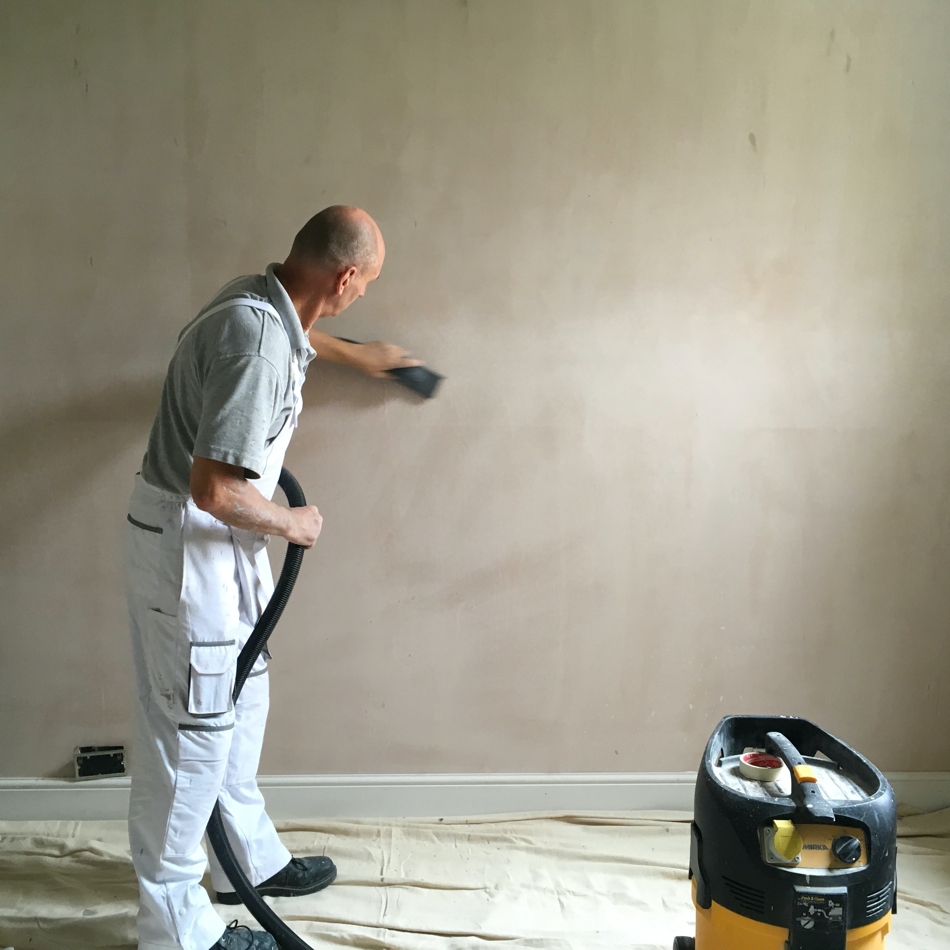To start with
As always, the starting point is quality: we never cut corners on ingredients. As with the Exterior Oil paint, for this Interior range, we use nothing but the highest quality ingredients.
Preparation
Good prep gives the best results. Freshly plastered walls (once fully dry), benefit from sanding down.

Brush or roller?
The interior range is based on linseed oil but we have used a natural cellulose-based emulsifier so you can thin it with water. Tools can also be cleaned with water but best of all: you can apply it by roller. We recommend a good quality microfibre roller with a large pile (17mm if you can get it).
Application by brush is probably for the more advanced decorator... This colour is Nr 30 Nimbus (which looks lighter in 2 coats and more daylight)
Wet-in-wet
Always work away from the light source (i.e. doors and windows) and do one wall in a go. Don't go around the room doing all of the cutting in first but try to apply the paint wet-in-wet, which means that you can do the edges of a wall with a brush but only go as far as you can catch up with the roller before the edges dry.
This is a second coat (by roller) in our colour Nr 34 Wet Cobble
The paint can be used on plaster walls (you can paint straight onto dried fresh plaster, no need for a primer), but is also suitable for use on (bare) timber. However, this is a matte paint and not as strong and durable as our Exterior paint. So, if you have a household with kids and animals, you might want to consider our exterior range for skirting boards and doors.
